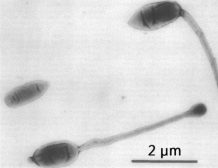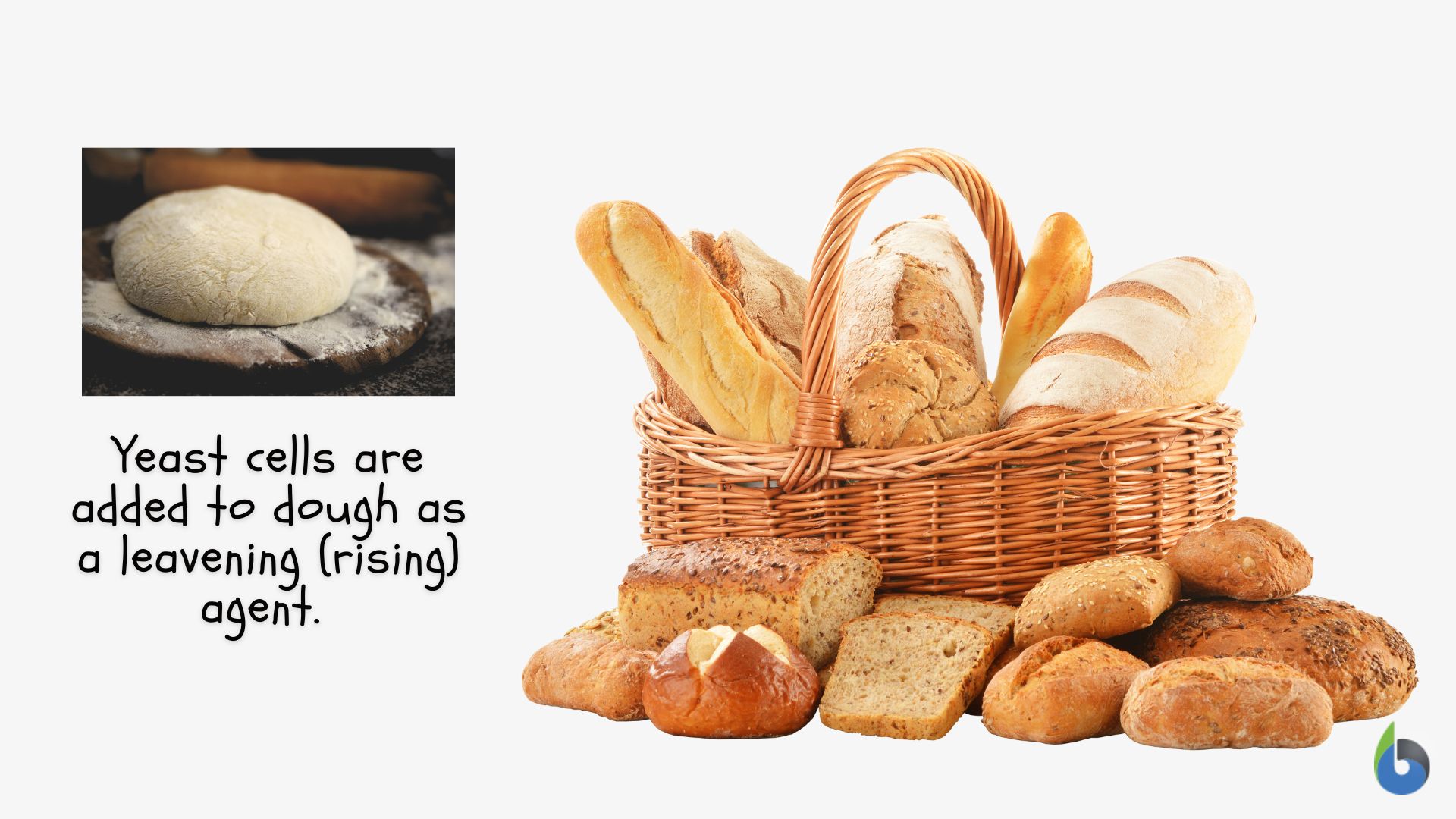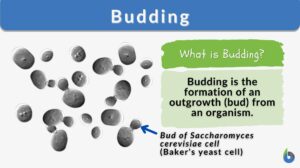
Budding
n., plural: buddings
/ˈbʌdɪŋ/
Definition: Asexual reproduction where new organisms grow from parent buds.
Table of Contents
Budding Definition
In a general context, budding refers to a state where development begins. In science, its meaning refers to the process of bud formation, as it is seen in both unicellular (e.g. budding bacteria and yeast cells) and multicellular organisms (e.g. plants and sponges). Synonyms: developing; bud grafting.
What is Budding in Biology?
In biology, budding is the formation of an outgrowth (bud) from an organism. The bud is capable of developing into a new individual. Another term for this process is gemmation. The process of gemmation fits the budding description. A new individual is formed by a bud growing from the body of the “parent”. Since no gametes are involved in the process, budding is a form of asexual reproduction and the “offspring” is a clone of the parent. Rather than sex cells, somatic cells are involved. They divide mitotically and give rise to new sets of cells with the same genetic composition. Asexual budding is one of the modes of reproduction in many prokaryotes and eukaryotes.
In other biology-related fields, budding has other roles apart from reproduction. In embryology, budding refers to the structures that are formed as outgrowths from pre-existing parts during embryo differentiation. In virology, a bud is a protrusion formed by certain viruses as they use a fragment of the host cell membrane as they leave the cell. The host’s cell membrane fragment becomes the external membrane of the virus. In this way, the virus can leave the cell without causing lysis to their host cell. Thus, the remaining viruses can still propagate within the host cell.
Budding Definition in Microbiology
In microbiology, cell budding is a type of asexual reproduction occurring in certain single-celled organisms. Budding bacteria, for instance, are bacteria that reproduce by budding. Examples are Caulobacter, Hyphomicrobium, and Stella spp. (Ref.1) Most of them have stalks that they use to attach to a substrate in their aquatic habitats. Hyphomicrobium, for instance, produces prostheca, the hyphal filament where a bud grows at the tip.

What Happens During Budding?
Budding is different from another prokaryotic asexual reproduction, binary fission. In binary fission, the cell divides to give rise to two daughter cells of equal unilateral growth. The parent splits into two cells with the same size. In budding, a new cell grows from an old cell. The new cell tends to be smaller than the old one. The same principle applies to single-celled eukaryotes. In fungi, such as the yeast, Saccharomyces cerevisiae, a smaller daughter cell grows on the larger mother cell. The bud forms and stays for a while, and then detaches to grow fully as a new individual.

More Budding Examples

Budding also occurs in certain invertebrates, e.g. Hydra (sponge), corals, echinoderm larvae, and some acoel flatworms. Budding in hydra occurs initially as a bud growing at the side of the “mother”. The bud breaks off to become a new individual Hydra.
Budding in plants is a form of vegetative reproduction. It occurs naturally. However, it can also be induced artificially, by horticulture. In this regard, the propagative technique is referred to as grafting wherein the bud of one plant is inserted into another plant so that both plants can continue growing together. In most cases, a bud of a plant is inserted at the bark of the stem of another plant. Roses are an example of a plant that is commonly bud-grafted.
NOTE IT!
Yeast Budding – the Science Behind the Perfect Bread
Adding yeast to the dough is one of the key steps in making a flavorful bread. The yeast acts as a leavening agent that makes the dough rise. Yeast cells, for a longer shelf life, are dehydrated to yield a ‘dry yeast’ that can be conveniently stored and transported. When needed, the dormant yeast cells can be brought back to life by adding water (ideally warm) to reactivate them and restart fermentation, a metabolic process that generates chemical energy (ATP) that will sustain various biological processes, including budding. They are added to the dough where they can use the available nutrients (sugars) and start producing carbon dioxide (CO2) as a fermentation byproduct. CO2 gas gets trapped in the dough, causing the dough to expand and rise (leaven). This is a crucial process to ensure that the bread will be airy, flavorful, and aromatic.
Fermentation is pivotal but not the only process involved in making excellent bread. The budding process plays a key role as well. Yeasts, upon reactivation (initial phase) and adjusting (lag phase), eventually produce enzymes and other molecules so they can start to bud or divide. Typically, the generation time (i.e., the duration or period for one cell to become two) takes about an hour or longer after reactivation, depending on the strain and environmental conditions.
As yeast cells bud and increase in number, more cells would therefore be able to ferment the sugars in the dough. Increased yeast cell population improves the rate and the amount of carbon dioxide production, contributing to the rising of the dough and the flavor development. The enhanced activity produces more flavorful compounds that contribute to a richer flavor profile of the bread.

References
- Its Citizens. Governments. (2020) Budding bacterium | biology | Britannica. https://www.britannica.com/science/budding-bacterium
© Biology Online. Content provided and moderated by Biology Online Editors.







